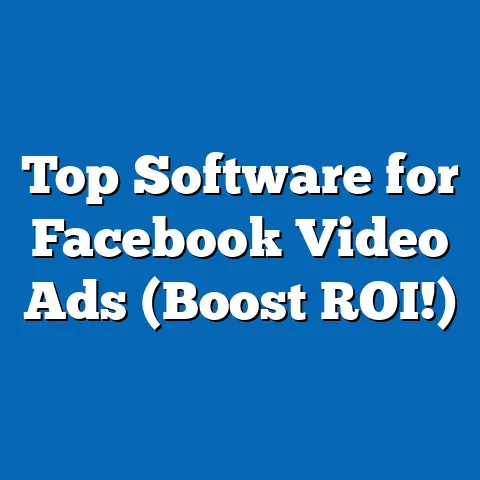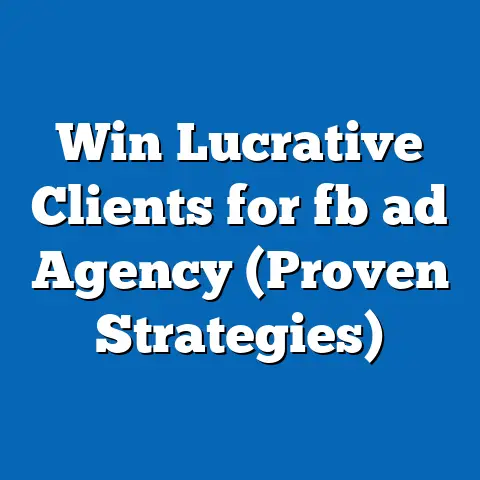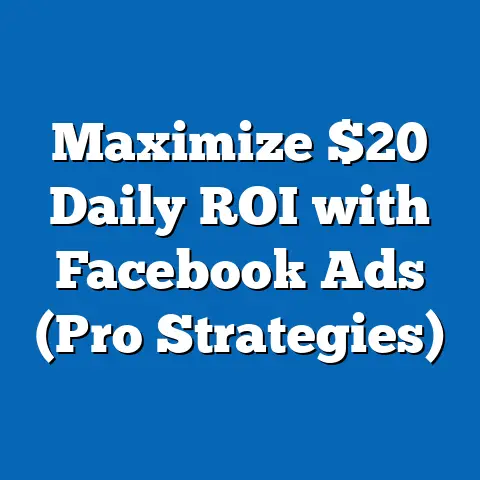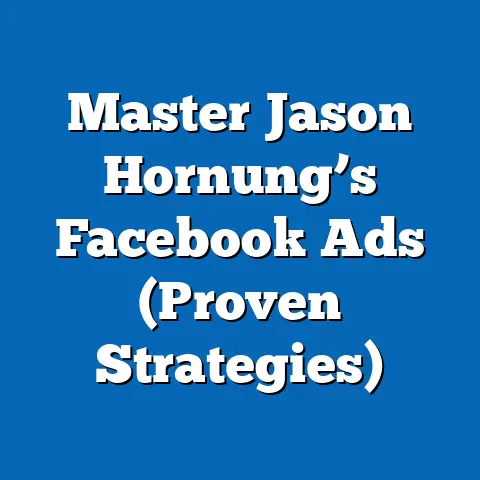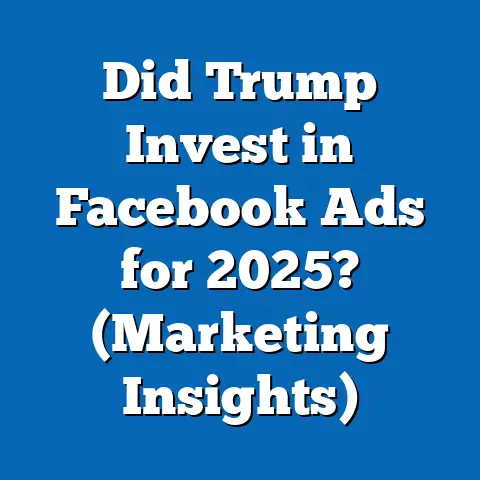Transform Ecommerce Facebook Ads Funnel (Expert Insights)
Transforming Ecommerce Facebook Ads Funnel: Expert Insights
The rise of e-commerce has been nothing short of meteoric. Today, online retail isn’t just a trend; it’s the dominant force shaping consumer behavior. And at the heart of this digital marketplace lies Facebook, a platform with billions of users and unparalleled advertising capabilities. But simply throwing ads out there and hoping for the best? That’s a recipe for a burned budget and frustrated sighs.
Think about it: you wouldn’t walk into a physical store and immediately demand someone buy something. You’d guide them through the experience, showcasing your products, answering their questions, and building trust. The same principle applies online. That’s where the Facebook Ads funnel comes in, guiding potential customers through the purchasing journey step-by-step.
Right now, we’re seeing a massive shift towards personalization in digital marketing. E-commerce brands aren’t just blasting generic ads to everyone; they’re using data analytics and AI to create tailored experiences that resonate with individual consumers. This means understanding their needs, their interests, and their buying behaviors, and then crafting ads that speak directly to them.
In this article, I’m going to share some expert insights on how to transform your e-commerce Facebook Ads funnel for better performance and ROI. We’ll cover everything from understanding the different stages of the funnel to implementing innovative strategies that drive engagement and conversions. Let’s get started!
Understanding the Facebook Ads Funnel
Think of the Facebook Ads funnel as a roadmap for your potential customers. It’s the journey they take from initially discovering your brand to ultimately making a purchase. This funnel is typically broken down into three key stages: Awareness, Consideration, and Conversion. Each stage requires a different approach and a unique set of strategies.
Awareness Stage
At the top of the funnel is the Awareness stage. This is where you’re introducing your brand to a new audience. The goal here isn’t to make a sale; it’s to get people to notice you. Think of it as planting a seed. You want to create brand recognition and pique interest in what you have to offer.
How to Target:
- Broad Targeting: Focus on demographics, interests, and behaviors relevant to your product or industry.
- Lookalike Audiences: Target users who are similar to your existing customers. These are people who share characteristics with those who already love your brand.
- Compelling Visuals: Use eye-catching images and videos that grab attention and communicate your brand’s value proposition.
Example: Let’s say you sell eco-friendly clothing. Your awareness ad might feature stunning visuals of your clothes being worn in natural settings, highlighting the sustainable materials and ethical production practices. The copy might focus on the brand’s mission and values, rather than specific products.
Consideration Stage
Once people are aware of your brand, the next step is to move them into the Consideration stage. This is where you start to educate them about your products and services, showcasing the benefits and addressing any potential concerns. You’re essentially nurturing the seed you planted in the Awareness stage.
How to Target:
- Website Visitors: Retarget users who have visited your website but haven’t made a purchase.
- Engagement Audiences: Target users who have interacted with your previous ads or social media content.
- Detailed Product Information: Provide in-depth descriptions, customer testimonials, and product demos.
Example: Continuing with the eco-friendly clothing brand, your consideration ad might showcase specific product features, such as the durability of the fabric or the comfort of the fit. You could also include customer reviews or a video demonstrating the clothes in action.
Conversion Stage
Finally, we reach the Conversion stage, the bottom of the funnel. This is where you’re asking people to take the final step and make a purchase. You’ve built awareness, you’ve nurtured their interest, and now it’s time to seal the deal.
How to Target:
- Abandoned Cart: Retarget users who have added items to their cart but haven’t completed the checkout process.
- Special Offers: Provide exclusive discounts, free shipping, or limited-time promotions to incentivize purchases.
- Clear Call-to-Action: Use strong, direct calls to action that encourage immediate action, such as “Shop Now” or “Get 20% Off.”
Example: For the eco-friendly clothing brand, your conversion ad might feature a limited-time discount code or free shipping on orders over a certain amount. The ad would also include a clear call to action, such as “Shop Now and Save!”
Why is this so important? According to a study by HubSpot, companies that nurture leads make 50% more sales at a cost per lead that is 33% lower. A well-structured funnel ensures that you’re reaching the right people with the right message at the right time, maximizing your chances of converting them into loyal customers.
Takeaway: Understanding the Facebook Ads funnel is crucial for creating effective campaigns. By targeting users at different stages of their buying journey, you can increase engagement, drive conversions, and ultimately boost your ROI.
Key Components of a Successful Facebook Ads Funnel
Now that we understand the different stages of the funnel, let’s delve into the key components that make it all work. These are the essential elements that will determine the success of your Facebook Ads campaigns.
Audience Targeting
Targeting the right audience is paramount. You could have the most beautiful ad creative and the most compelling copy, but if you’re showing it to the wrong people, it’s all for naught. Facebook offers a wealth of targeting options, allowing you to narrow down your audience based on demographics, interests, behaviors, and more.
Here’s what I’ve found works best:
- Custom Audiences: These are created using your own data, such as email lists, website visitors, or app users. Custom Audiences allow you to retarget specific groups of people who have already interacted with your brand.
- Lookalike Audiences: As mentioned earlier, these are users who share characteristics with your existing customers. Lookalike Audiences are a great way to expand your reach and find new potential customers.
- Detailed Targeting: This allows you to target users based on their interests, behaviors, demographics, and more. Detailed Targeting is useful for reaching a broad audience with specific interests or characteristics.
Segmentation is Key: Don’t just throw everyone into one big audience. Segment your audience based on behavior, demographics, and interests to create more effective targeting. For example, you might segment your audience based on age, gender, location, or purchase history.
Ad Creatives
Your ad creatives are the visual and textual elements that make up your ad. These are what grab people’s attention and communicate your message. High-quality ad creatives are crucial for driving engagement and conversions.
What makes a great ad creative?
- Eye-Catching Visuals: Use high-quality images and videos that are visually appealing and relevant to your target audience.
- Compelling Copy: Write clear, concise, and persuasive copy that highlights the benefits of your product or service.
- Strong Call-to-Action: Use a clear, direct call to action that encourages immediate action.
- Brand Consistency: Ensure that your ad creatives are consistent with your brand’s visual identity and messaging.
A/B Testing is Your Friend: Don’t be afraid to experiment with different ad creatives to see what works best. A/B testing is a powerful tool for optimizing your ad performance. Try testing different headlines, images, videos, and calls to action to see which ones resonate most with your audience.
Landing Pages
Your landing page is where users are directed after clicking on your ad. It’s crucial that your landing page is relevant to your ad and provides a seamless user experience. A poorly designed landing page can kill your conversion rates, even if your ad is perfect.
Here’s what makes a great landing page:
- Relevance: Ensure that your landing page is relevant to your ad and provides the information that users are expecting.
- Clear Value Proposition: Clearly communicate the value of your product or service.
- Easy Navigation: Make it easy for users to find what they’re looking for and complete the desired action.
- Mobile-Friendly: Ensure that your landing page is optimized for mobile devices.
- Fast Loading Speed: Optimize your landing page for fast loading speed. Slow loading times can frustrate users and lead to high bounce rates.
The Power of the Facebook Pixel: The Facebook Pixel is a small piece of code that you install on your website. It allows you to track user interactions and optimize your campaigns. The Pixel is essential for retargeting, tracking conversions, and creating Lookalike Audiences.
Takeaway: A successful Facebook Ads funnel relies on a combination of audience targeting, ad creatives, and landing pages. By optimizing each of these components, you can create campaigns that drive engagement, conversions, and ROI.
Expert Insights on Funnel Transformation
Now, let’s get to the juicy part: how to actually transform your Facebook Ads funnel to achieve even better results. I’ve consulted with numerous e-commerce businesses, and I’ve gathered some expert insights that can help you take your campaigns to the next level.
Insight #1: Embrace Video Content
Video is king in the digital world, and Facebook is no exception. Video ads are more engaging and more memorable than static images. They allow you to tell a story, showcase your product in action, and build a stronger connection with your audience.
Expert Quote: “Video has completely transformed our Facebook Ads strategy. We’ve seen a significant increase in engagement and conversions since we started incorporating video into our campaigns.” – Sarah Jones, Marketing Director at EcoThreads
Best Practices:
- Keep it Short and Sweet: Aim for videos that are 15-30 seconds long.
- Grab Attention Quickly: The first few seconds of your video are crucial.
- Showcase Your Product: Highlight the benefits and features of your product.
- Include a Clear Call-to-Action: Tell viewers what you want them to do.
Insight #2: Leverage User-Generated Content
User-generated content (UGC) is content created by your customers, such as reviews, testimonials, and photos. UGC is incredibly powerful because it’s authentic and trustworthy. People are more likely to trust the opinions of other customers than they are to trust advertising from a brand.
How to Incorporate UGC:
- Run a Contest: Encourage customers to share photos or videos of themselves using your product.
- Feature Reviews and Testimonials: Highlight positive reviews and testimonials in your ads.
- Partner with Influencers: Collaborate with influencers to create authentic content about your brand.
Insight #3: Personalize Your Ads
Personalization is the future of digital marketing. Consumers are bombarded with ads every day, so you need to find a way to stand out from the crowd. Personalizing your ads based on user data can significantly improve engagement and conversions.
How to Personalize Your Ads:
- Use Dynamic Product Ads: These ads automatically showcase products that users have viewed on your website.
- Target Based on Purchase History: Show users ads for products that are related to their previous purchases.
- Personalize Your Ad Copy: Use the user’s name or location in your ad copy.
Insight #4: Don’t Forget About Mobile
The vast majority of Facebook users access the platform on their mobile devices. It’s crucial that your ads are optimized for mobile. This means using mobile-friendly ad formats, optimizing your landing pages for mobile devices, and ensuring that your ads load quickly on mobile networks.
Mobile-First Best Practices:
- Use Vertical Video: Vertical video is optimized for mobile viewing.
- Keep Your Copy Concise: Mobile users have shorter attention spans.
- Use Large, Clear Call-to-Actions: Make it easy for users to tap on your call-to-action button.
Insight #5: A/B Test Everything
I mentioned this before, but it’s so important that it deserves repeating. A/B testing is the process of comparing two versions of an ad to see which one performs better. A/B testing is essential for optimizing your campaigns and maximizing your ROI.
What to A/B Test:
- Headlines
- Images
- Videos
- Calls-to-Action
- Targeting Options
Takeaway: Transforming your Facebook Ads funnel requires a combination of creativity, data analysis, and a willingness to experiment. By embracing video content, leveraging user-generated content, personalizing your ads, optimizing for mobile, and A/B testing everything, you can take your campaigns to the next level.
Measuring Success and Optimizing Your Funnel
You’ve implemented all these strategies, you’ve transformed your funnel, but how do you know if it’s actually working? That’s where measuring success comes in. Tracking the right key performance indicators (KPIs) is crucial for evaluating the effectiveness of your Facebook Ads campaigns and identifying areas for improvement.
Key Performance Indicators (KPIs) to Monitor:
- Click-Through Rate (CTR): This measures the percentage of people who click on your ad after seeing it. A high CTR indicates that your ad is engaging and relevant to your target audience.
- Conversion Rate: This measures the percentage of people who complete a desired action after clicking on your ad, such as making a purchase or filling out a form. A high conversion rate indicates that your landing page is effective and that you’re targeting the right people.
- Cost Per Conversion (CPC): This measures the average cost of acquiring a conversion. A low CPC indicates that your campaigns are efficient and that you’re getting a good return on your investment.
- Return on Ad Spend (ROAS): This measures the amount of revenue you generate for every dollar you spend on advertising. A high ROAS indicates that your campaigns are profitable and that you’re maximizing your ROI.
- Cost Per Mille (CPM): This measures the cost per thousand impressions. It gives you an idea of how much it costs to get your ad in front of people.
- Frequency: This is the average number of times someone sees your ad. Too high of a frequency can lead to ad fatigue.
The Iterative Process: Optimization is an ongoing process. Don’t just set up your campaigns and forget about them. Regularly monitor your KPIs and make adjustments as needed. A/B test different ad creatives, targeting options, and landing pages to see what works best.
Tools and Resources:
- Facebook Ads Manager: This is Facebook’s native advertising platform. It provides a wealth of data and analytics to help you track your campaign performance.
- Google Analytics: This is a free web analytics tool that provides insights into your website traffic and user behavior.
- Third-Party Analytics Tools: There are many third-party analytics tools that can help you track your Facebook Ads performance.
Takeaway: Measuring success is essential for optimizing your Facebook Ads funnel. By monitoring your KPIs and making adjustments as needed, you can ensure that your campaigns are driving engagement, conversions, and ROI.
Conclusion
Transforming your e-commerce Facebook Ads funnel is an ongoing journey, not a one-time event. It requires a combination of creativity, data analysis, and a willingness to experiment. But by understanding the different stages of the funnel, optimizing your key components, and leveraging expert insights, you can create campaigns that drive significant results.
Remember, the key is to focus on providing value to your audience. Create ads that are engaging, informative, and relevant to their needs. By building trust and providing a seamless user experience, you can convert potential customers into loyal fans.
I encourage you to leverage the expert insights shared in this article to transform your own Facebook Ads strategies and enhance your e-commerce performance. Don’t be afraid to experiment, to try new things, and to learn from your mistakes. The world of digital advertising is constantly evolving, so it’s important to stay curious and keep learning.
Now go out there and build some amazing Facebook Ads funnels! I’m confident that with the right strategies and a little bit of hard work, you can achieve your e-commerce goals. Good luck!


